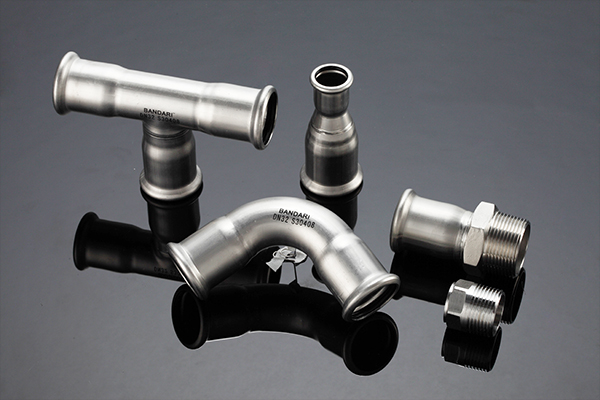Stainless steel welded pipe manufacturers introduce stainless steel pipes into many different grades of materials, each of which has a different role. Since its invention at the beginning of this century, stainless steel pipes have combined the image of modern materials and the excellent reputation in construction applications. Make its competitors envious. Stainless steel pipes will not produce corrosion, pitting, rust or wear. Stainless steel pipe is also one of the stronger materials among the metal materials used in construction. Since stainless steel pipe has good corrosion resistance, it can keep structural components intact in engineering design. Chromium-containing stainless steel pipes also combine mechanical strength and high extensibility, making them easy to manufacture and meeting the needs of architects and structural designers.
Stainless steel pipe 304: has good corrosion resistance, heat resistance, low temperature strength and mechanical properties, good hot workability such as stamping and bending, and no heat treatment hardening. Uses: cutlery, cabinets, boilers, auto parts, medical appliances, building materials, food industry

Stainless steel pipe 304L: As a low-C grade 304 steel, in general, corrosion resistance is similar to 304, but after welding or after stress relief, its resistance to grain boundary corrosion is excellent, and it can also be used without heat treatment. Maintain good corrosion resistance.
Stainless steel pipe 310: The main features are: high temperature resistance, generally used in boilers, automobile exhaust pipes. Other properties are general.
Stainless steel pipe 303: By adding a small amount of sulfur and phosphorus, it is easier to cut than 304, and other properties are similar to 304.
Stainless steel pipe 302: 302 stainless steel rods are widely used in auto parts, aviation, aerospace hardware tools, chemical industry. The details are as follows: handicrafts, bearings, sliding flowers, medical instruments, electrical appliances, etc. Features: 302 stainless steel ball belongs to austenitic steel, which is relatively close to 304, but the hardness of 302 is higher, HRC≤28, has good rust and corrosion resistance
Stainless steel pipe 301: good ductility, used for forming products. It can also be hardened by mechanical processing. Good weldability. Wear resistance and fatigue strength are better than 304 stainless steel.
Stainless steel pipe 202: belongs to chromium-nickel-manganese austenitic stainless steel, performance is better than 201 stainless steel
Stainless steel pipe 201: belongs to chromium-nickel-manganese austenitic stainless steel with low magnetic properties
Stainless steel pipe 410: belongs to martensite (high-strength chromium steel), with good wear resistance and poor corrosion resistance.
Stainless steel tube 420: "Cutting grade" martensitic steel, similar to early stainless steel such as Brinell high-chromium steel. It is also used for surgical knives and can be made very bright.
Stainless steel pipe 430: ferritic stainless steel, used for decoration, for example, for automotive accessories. Good formability, but poor temperature resistance and corrosion resistance
Each of the above stainless steel pipes has its own performance characteristics and advantages. The stainless steel pipes required for various purposes should have corresponding stainless steel materials. When determining the materials, professional personnel must be required to go through the environment and uses and other needs. The combination can determine the material of the stainless steel pipe.






